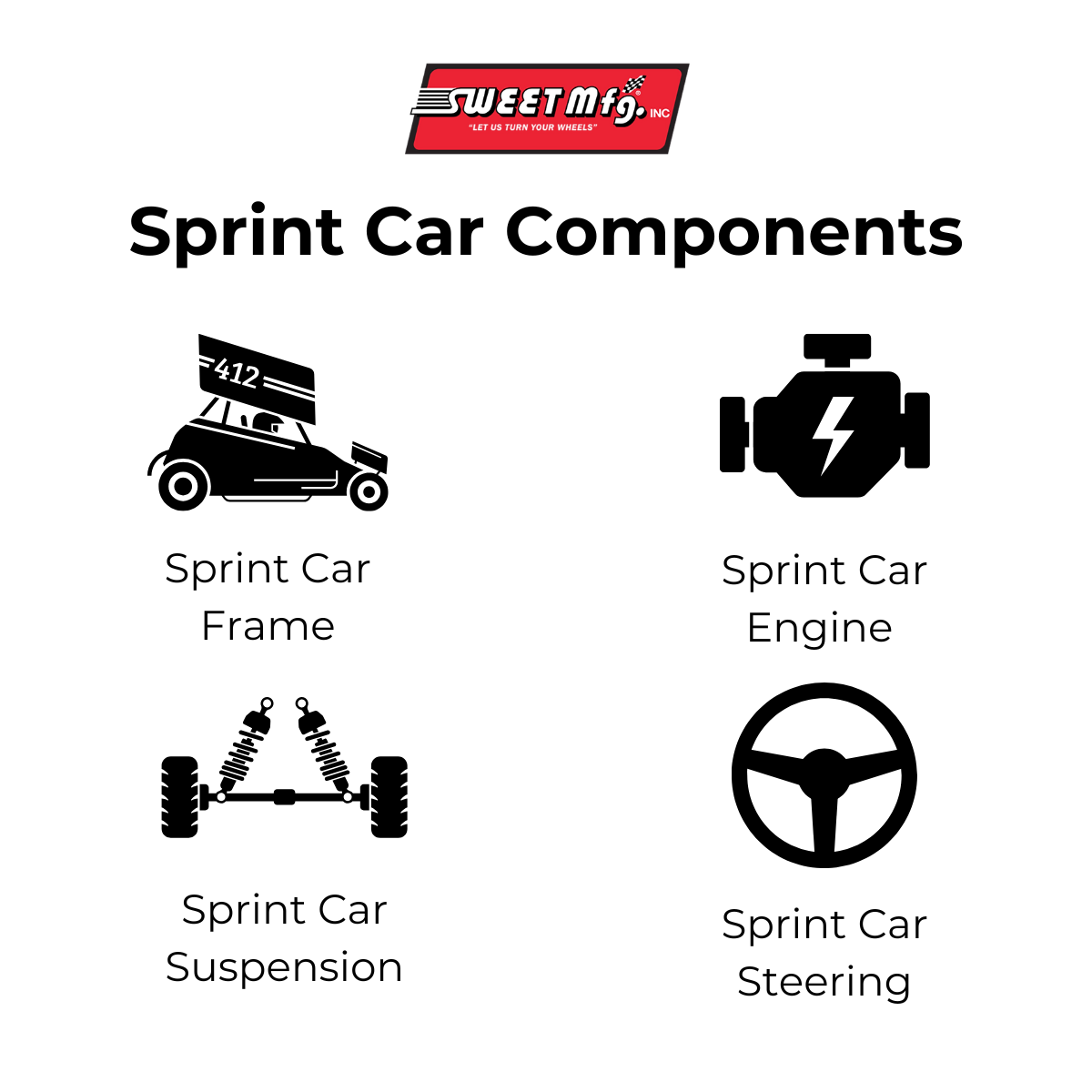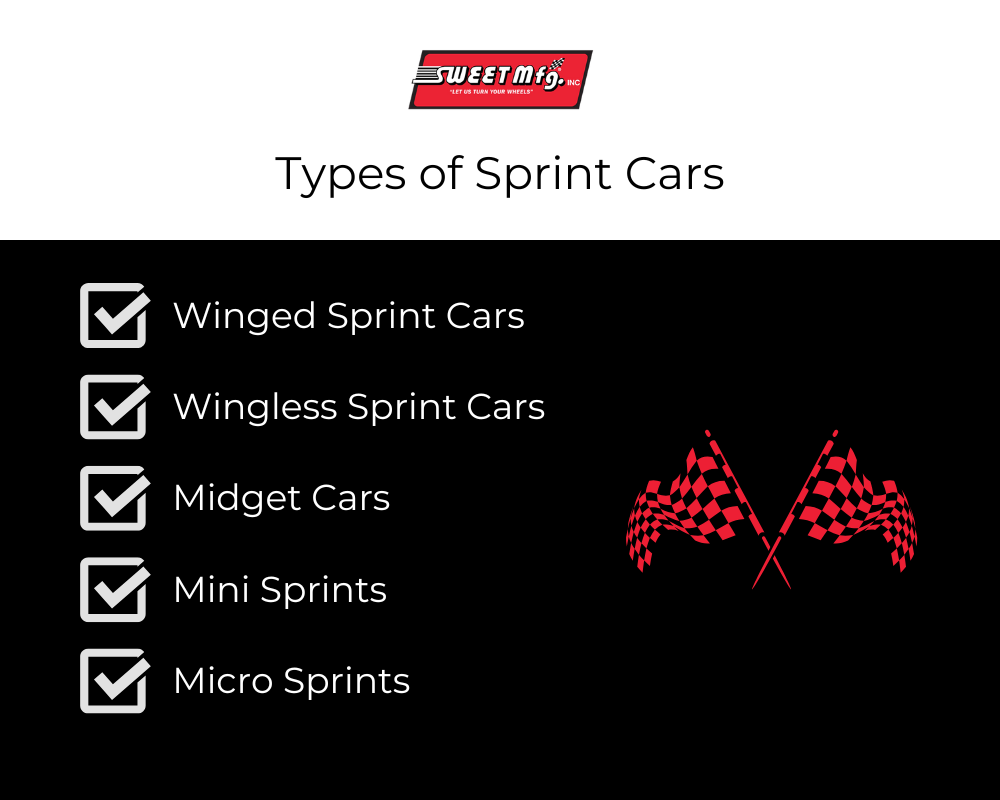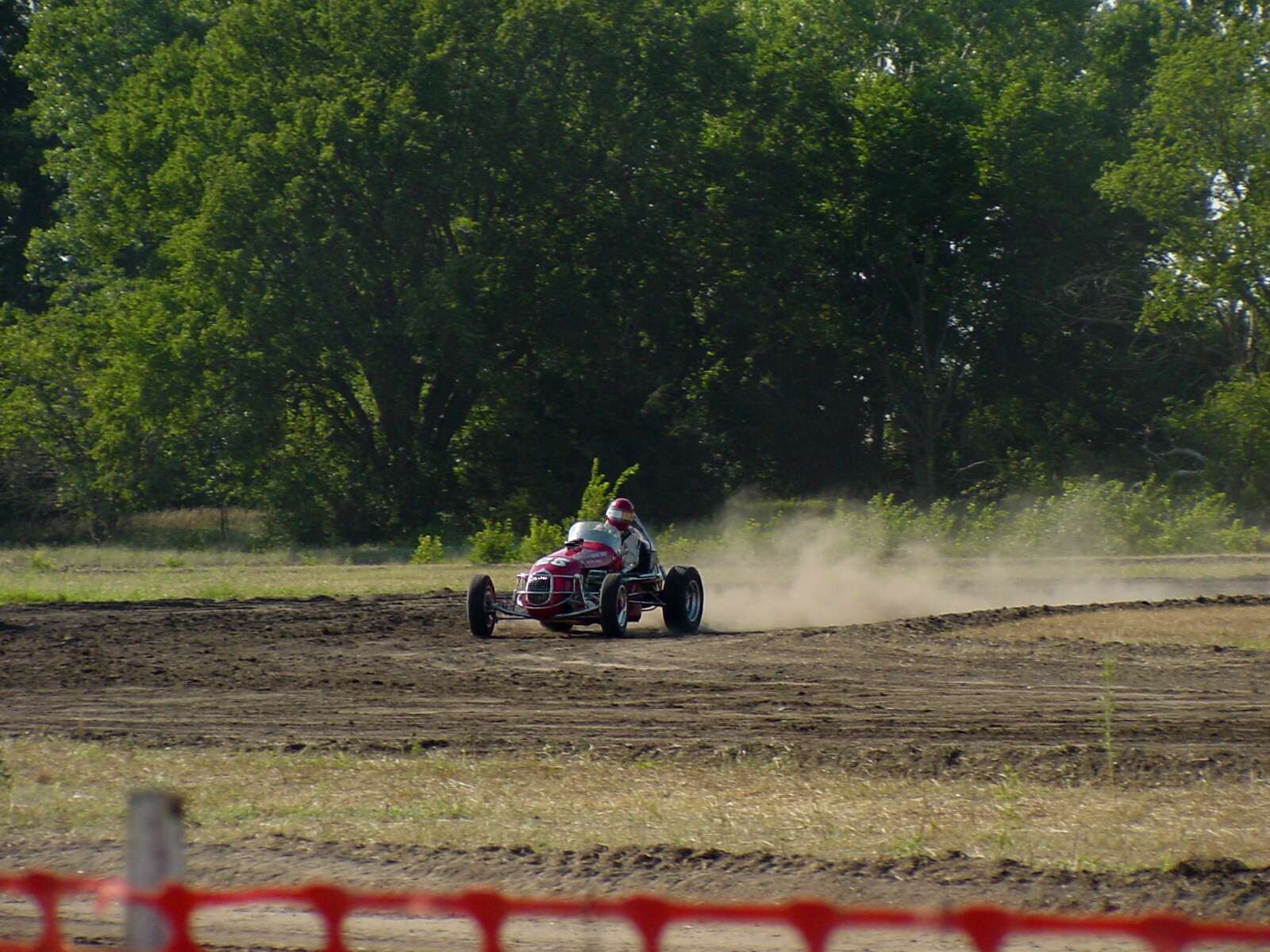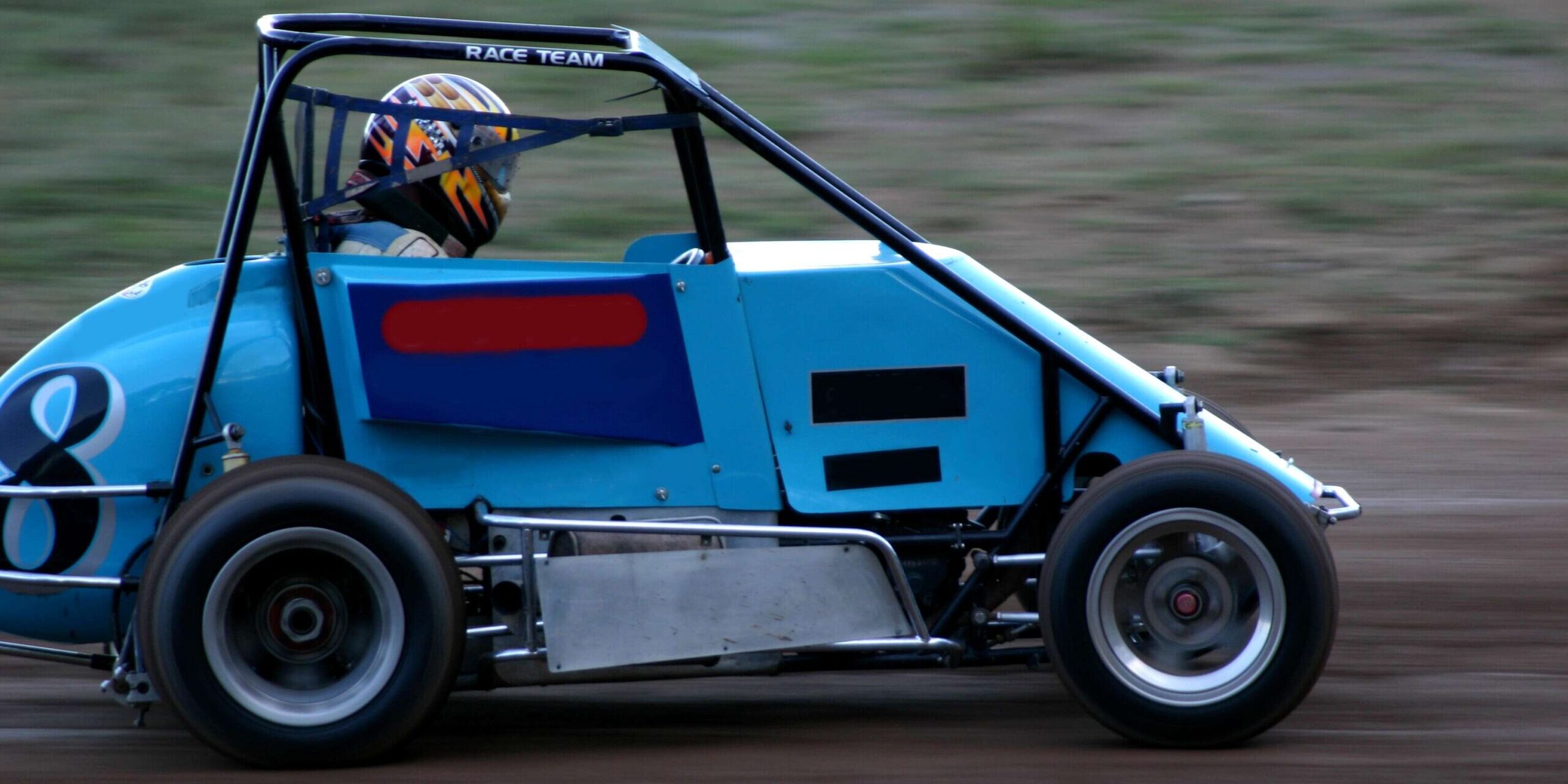Table of Contents
The Short Answer: Sprint car racing is a high-powered form of dirt or pavement track auto racing featuring purpose-built race cars often with distinctive large wings. These specialized vehicles compete on oval tracks at approximate top speeds exceeding 140 mph.
A sprint car is an open-wheel race car that runs on short oval or circular tracks made of dirt or paved tracks. Sprint car racing originated in the 1920s American Midwest, where innovative mechanics and fearless drivers began modifying ordinary cars into stripped-down racing machines. What started on dusty county fairground tracks has evolved into one of motorsport’s most electrifying disciplines, drawing thousands of passionate fans around the world, including the U.S., Canada, Australia, New Zealand, and South Africa.
Today, sprint car racing stands as a cornerstone of grassroots American motorsport, with multiple sanctioning bodies overseeing hundreds of events annually. These powerful machines, which are characterized by their massive wings, lightning-quick acceleration, and spectacular dirt-slinging action, continue to captivate audiences and inspire new generations of racers.
In this comprehensive guide, we’ll explore the technical aspects of sprint cars, from their specialized components to various racing classes. Whether you’re a seasoned mechanic, aspiring driver, or curious enthusiast, explore expert insights into what makes this motorsport uniquely thrilling.

The Anatomy of a Sprint Car
Sprint cars represent the pinnacle of purpose-built track racing machines, featuring a unique combination of lightweight construction and immense power. These vehicles are engineered with three primary considerations: speed, safety, and handling precision.
Sprint Car Frame
The foundation of every sprint car begins with a carefully engineered chromoly tube frame chassis, This robust framework incorporates strategic crush zones while maintaining exceptional rigidity for optimal handling. The distinctive top wing, measuring approximately 25 square feet, works in concert with a smaller front wing to generate significant downforce, keeping these powerful machines planted firmly on the track during high-speed cornering.
Sprint Car Engine
Under the hood, sprint cars utilize high-performance engines, most commonly 410 cubic inch power plants capable of producing upwards of 900 horsepower. These engines are paired with specialized direct-drive transmissions, eliminating the need for gear shifting during competition. The steering system features quick-ratio components, including high-performance steering boxes and an adjustable wing, allowing drivers to execute precise adjustments through corners at high speeds.
Sprint Car Suspension
The suspension setup is equally sophisticated, employing torsion bar systems with specialized shock absorbers designed to handle the extreme demands of pavement and dirt track racing. The cars run specifically designed sprint car tires, with larger right-rear rubber to facilitate controlled sliding through turns. This asymmetrical configuration is crucial for maintaining optimal weight transfer during cornering.
Safety remains paramount in sprint car design. The roll cage construction extends well beyond basic requirements, featuring multiple intersection points and strategic bracing. Modern sprint cars incorporate advanced fire suppression systems that can be activated either by the driver or triggered automatically. Driver protection includes custom-fitted seats with head restraints, multi-point safety harnesses, and arm restraints designed specifically for open-wheel racing conditions.

Types of Sprint Cars & Classification
Sprint car racing features several distinct classifications, each with its own unique specifications and racing characteristics. The two primary categories are winged and non-winged sprint cars, with multiple sub-classifications within each group.
Winged Sprint Cars
The 410 Sprint Car
Representing the pinnacle of sprint car racing, these cars feature a massive 410-cubic-inch engine capable of producing over 900 horsepower. These powerful machines are the featured class at prestigious events like the World of Outlaws and dominate major racing circuits.
The 360 Sprint Car
This class utilizes a smaller 360-cubic-inch power plant generating approximately 700 horsepower, and serves as a popular intermediate division.
The 305 Sprint Car
Entry-level racers often begin with these cars, which use smaller engines producing around 450 horsepower, making them more manageable for developing drivers.
Wingless Sprint Cars
Traditional non-winged sprints, running without aerodynamic assistance, demand exceptional driver skill and precise car control. These cars compete in series like USAC (United States Auto Club) and place a premium on driver technique.
Midget cars, featuring smaller wheelbases and 300-400 horsepower engines, offer intense wheel-to-wheel racing on shorter tracks.
Mini sprints and micro sprints serve as developmental classes, with scaled-down chassis and smaller displacement engines perfect for grassroots racing.

Technical Requirements
Each class maintains strict regulations to ensure competitive racing.
Engine displacement limits are precisely defined:
– 410 cubic inches maximum for top-tier cars
– Exactly 360 cubic inches for the intermediate class
– 305 cubic inches for entry-level competition.
Weight regulations typically specify minimum weights with the driver:
– 1,400 pounds for 410s
– 1,375 for 360s
– 1,350 for 305s
Wing specifications are equally rigid, with top wings typically measuring 25 square feet and side boards regulated to specific dimensions based on class requirements.
Track Types & Characteristics
Sprint car racing takes place on specially prepared dirt or pavement oval tracks that demand both precise engineering and skilled maintenance. These tracks typically range from 1/4 mile to 1/2 mile in length, featuring carefully calculated banking angles that can reach up to 24 degrees in the turns.
Dirt Oval Tracks
The most common sprint car track, these often cover 1/4 mile to 1/2 mile circumferences. The surface composition typically consists of a carefully balanced mixture of clay, sand, and aggregate materials that create the ideal racing conditions when properly maintained.
Paved Tracks
Pavement sprint cars, which are designed for paved tracks, are less common than their dirt counterparts but offer their own unique racing experience. These tracks typically feature the same size ranges as dirt ovals but offer consistent surfaces, high cornering speeds, and higher grip levels.
Banking Variations
Banking angles in sprint car tracks serve multiple critical functions: they help generate the centripetal force necessary for high-speed cornering, create multiple racing lines, and influence the aerodynamic performance of the cars. The degree of banking varies significantly between tracks and even between different sections of the same track.
Track conditions can be impacted by a variety of factors, including weather, geographic location, and time of day.
Sprint Car Safety & Techniques
Track Safety
Modern facilities incorporate ARMCO barriers, catch fencing reaching heights of 14-17 feet, and specialized impact-absorbing walls in high-risk areas. Strategic placement of emergency access points allows rapid response to on-track incidents, while dedicated safety lighting systems provide immediate visual warnings to race-car drivers.
Starting & Passing Techniques
The art of sprint car racing demands mastery of unique starting procedures. Drivers arrange themselves in precise rows during the initial parade lap, maintaining strict spacing as they build speed. The crucial moment comes at the drop of the green flag, where drivers must perfectly time their acceleration while managing wheel spin on the dirt surface.
Passing in sprint car racing requires a combination of technical skill and tactical awareness. Successful drivers master the “slide job” technique, diving to the inside of a turn and sliding up in front of their competitor. They must also expertly read changing track conditions, identifying developing racing grooves as the surface evolves throughout an event.
Wing Adjustment Tactics
Drivers can fine-tune their top wing position, adjusting the car’s aerodynamic balance to match evolving track conditions. A rear-positioned wing will increase downforce over the rear of the vehicle, making it tighter. A more forward wing position will make the car looser, giving it the ability to slide or drift.
Find Sprint Car Components with Sweet Manufacturing
Sprint car racing represents one of motorsport’s most thrilling and technically demanding disciplines, combining raw power with precise engineering and skilled driving. These purpose-built machines showcase the pinnacle of short-track racing technology and driver capability. Remember that success in sprint car racing demands not just driving skill, but also intimate knowledge of vehicle setup and maintenance. Thoroughly understanding the unique technical requirements of sprint car components and using quality components are absolutely crucial for both performance and safety in this high-intensity sport.
Sweet Manufacturing’s comprehensive catalog of premium sprint car components includes professional-grade center steer boxes, pumps, wing valves, and more products designed to withstand the extreme demands of sprint car competition. Our specialized racing components are engineered for racing excellence to ensure your sprint car performs at its peak potential.


